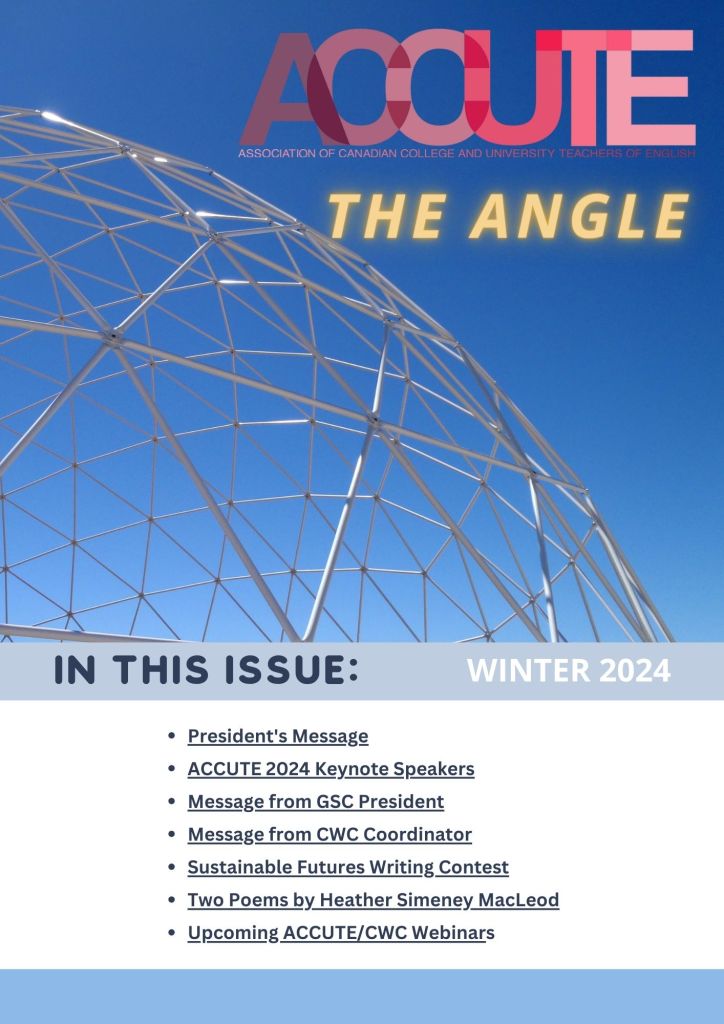ESC—“‘Fear, Love, and Confusion’: A Special Issue on the AUTOMATED BODY”
Deadline for submission of abstracts or completed papers: August 15, 2015
ESC: English Studies in Canada invites submissions for a special issue on the automated body, edited by Cecily Devereux and Marcelle Kosman, to be published Spring 2016. This special issue is situated in response to an expanding range of questions and concerns about humans and automation in early twenty-first-century cultural representation. Such questions and concerns are arguably evident in representation from the earliest days of mechanization and industrialization in the late eighteenth century, and what a scant twenty years ago were referred to as “cybercultures” have been the focus for nearly three decades of academic considerations. Contemporary cultural texts, we suggest, demonstrate a renewed engagement with questions of the implications of the convergence of the biological with the mechanical and the relationships and the limits of what Donna Haraway characterized in her 1985 “Cyborg Manifesto” as “couplings between organism and machine” and the “fear, love, and confusion” they generate. If fear is evident in what a 2014 New York Times op-ed (June 22) characterized as “robot-worriers’” concerns about automation and unemployment in the workplace, to take only one example, love of—and confusion regarding—human-machine convergences is evident in proliferating stories of transformation, connection, and relationship such as the 2014 film Her and Allison de Fren’s 2012 documentary The Mechanical Bride. This special issue of ESC is interested in questions of automated bodies broadly conceived. It undertakes to bring into conversation a range of papers focused on any aspect of bodies and automation in cultural representation across media and disciplines. We are interested in automated embodiment as a distinctively contemporary concern yet also/and as well in the histories and archaeologies of such embodiment across periods and contexts.
- Bodies and/as machines; anthropomorphized machines; mechanical enhancement; prosthetics
- Cybernetics, biomedical engineering, genetic engineering; new eugenics and reproductive technologies
- Science fiction, fantasy, speculative and dystopic fiction and film; genres and subgenres: cyberpunk, biopunk, steampunk; automated bodies in comics media
- Fictions of transformation across media: Carlo Collodi’s Pinocchio, Hoffmann’s “The Sandman,” Coppélia, The Nutcracker
- Fictions of male reproduction; parthenogenesis; auto-generation; cloning
- Mechanical bodies and televisual media: The Six Million Dollar Man, The Bionic Woman, Dark Angel, Aeon Flux; media and mechanization
- Mechanical bodies in dance; dancing machines; machine music; music and automatism; karaoke; Dance Dance Revolution
- Mechanical bodies and fitness; sports and automation
- Robots as themes and instruments in contemporary music: Daft Punk, Ladytron, Kraftwerk, Radiohead, Robyn; Auto-Tune
- Avatars; gaming bodies (bodies in games, players’ bodies); virtual automation; virtual companions; intimate operating systems: Her; Siri; artificial intelligence
- Humans and computers; computer automation; machine dependency; devices, appliances, watches, glasses; brain-computer interface
- Social media and automatism
Robot, robotics, fembot, cyborg, cylon, clone, replicant; robots as “immigrants from the future” (The Economist)
Anthropomorphized robots; robots and affect; robots and love; robots we love; robots we fear; human/robot hybrids; roboethics - Donna Haraway: reading organisms and machines since “The Cyborg Manifesto”
- Gender and automation; automation and patriarchy; fantasies of automation; housewives and mechanization
- Femininity and living dolls; Mechanical Brides, Stepford Wives, Windup Girls
- Masculinity and living dolls; Lars and the Real Girl, My Living Doll, Metropolis
- Automation, capital, and labour; automation and exhaustion; robots and dirty human work; overwork and automation; automation and unemployment
- Bodies in industry; factory bodies; Taylorism; Fordism; factory girls, typewriter girls; modernism, modernity, Modern Times
- Automated monsters (Chucky); zombies and/as automated bodies; Frankenstein; bodies and/as weapons; automation and monstrosity
- Automatic writing; computer-generated poetry; hypnotism and performing bodies
- Animals and automation; robot animals; cinema and mechanical creatures; technologies of 3D animation
- Automobility, automaticity, bodies and cars; killer cars (Christine, Killdozer)
- Automated toys and other things; sex toys; future toys
- Talking to machines: everyday life and automated systems
- Machines without humans: self-parking cars, self-flying planes, drones, drone photography; killing machines
- Surveillance and security systems; facial recognition technology; NSA monitoring; bio-identification
Please forward either a 500-word abstract OR a completed paper (6000-8000 words, in MLA format) and a 50-word biographical statement to Marcelle Kosman (mkosman@ualberta.ca) and Cecily Devereux (cecily.devereux@ualberta.ca) by August 15, 2015. Final revisions to accepted papers will need to be completed by December 15, 2015.
ESC: English Studies in Canada is a quarterly journal of scholarship and criticism concerned with the study of literature and culture. Recent special issues include “Hysteria Manifest: Cultural Lives of a Great Disorder” (40.1: 2014), edited by Derritt Mason and Ela Pryzbylo); “The Global Animal” (39.1: 2013), edited by Karyn Ball and Melissa Haynes), and “Childhood and Its Discontents” (38:3-4: 2012), edited by Nat Hurley. For more information visit ESC Digital at http://www.arts.ualberta.ca/~esc ESC normally accepts black and white images, up to a limit of six per article. Contributors are responsible for providing image files in black and white with a resolution no less than… and for securing permissions in advance of publication. The journal’s style sheet is available at http://www.arts.ualberta.ca/~esc/submit.php
Categories: ACCUTE CFP, Non ACCUTE CFPs



